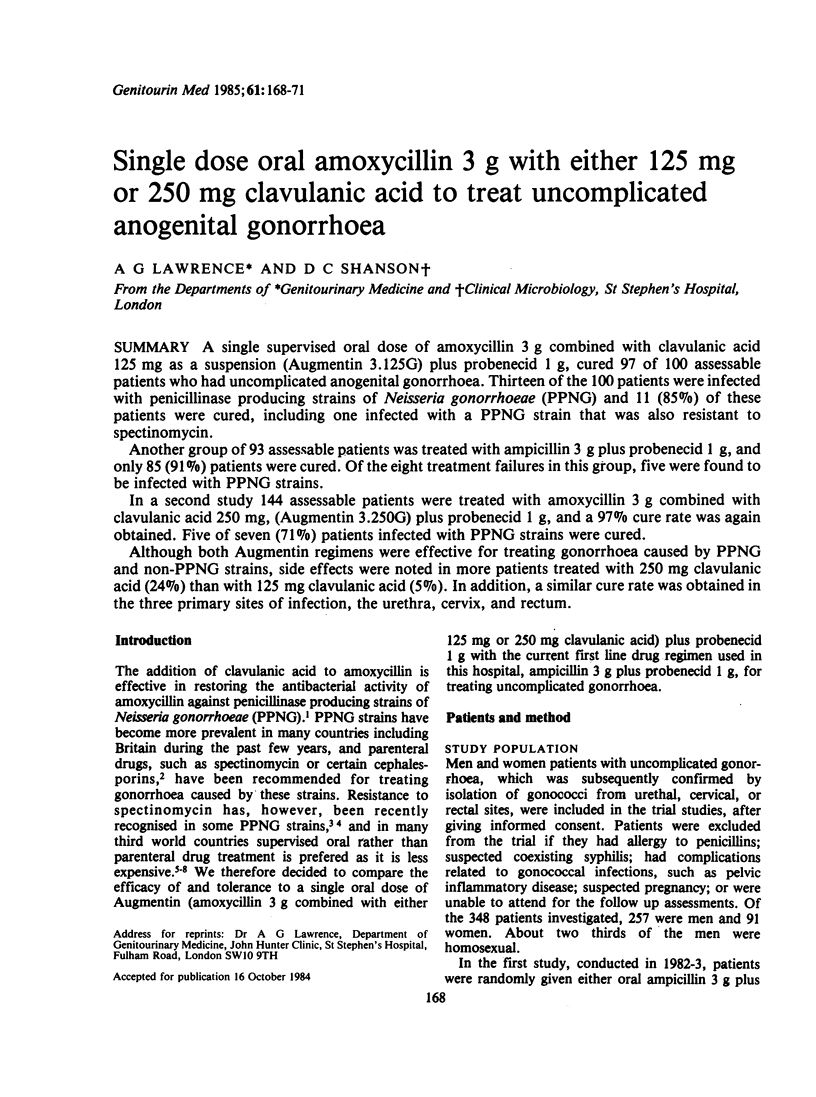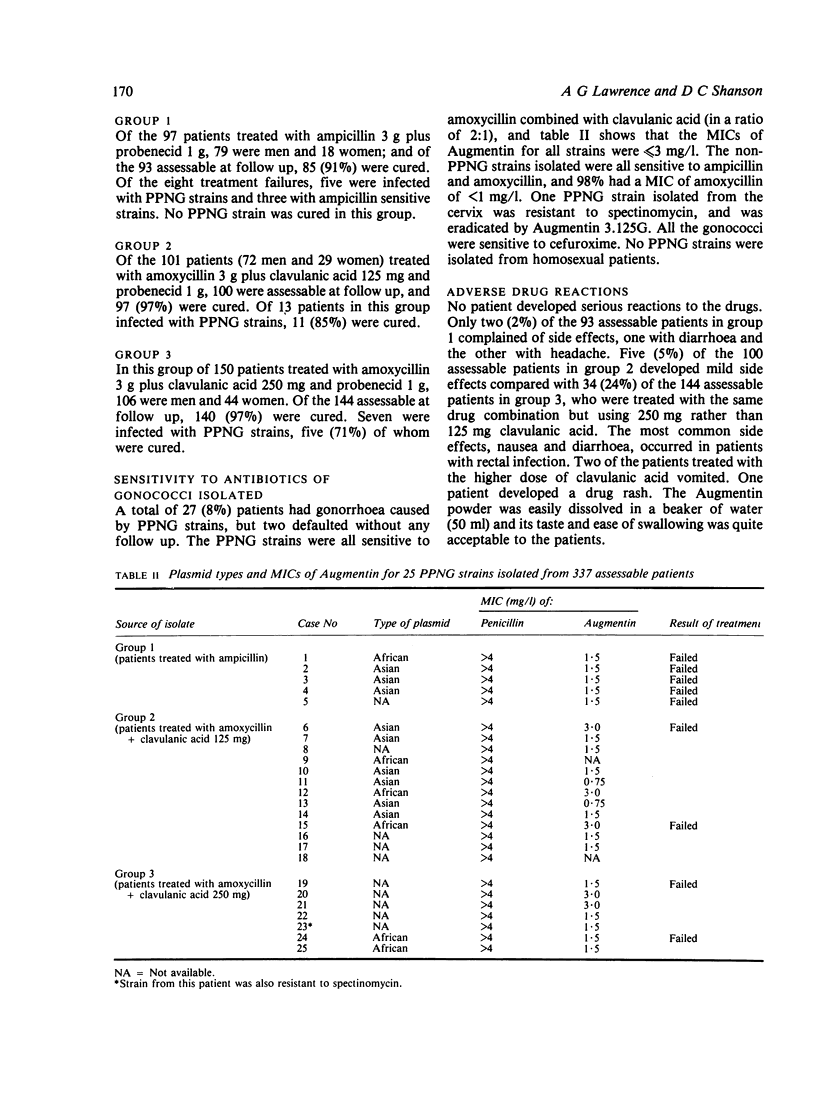Abstract
A single supervised oral dose of amoxycillin 3 g combined with clavulanic acid 125 mg as a suspension (Augmentin 3.125G) plus probenecid 1 g, cured 97 of 100 assessable patients who had uncomplicated anogenital gonorrhoea. Thirteen of the 100 patients were infected with penicillinase producing strains of Neisseria gonorrhoeae (PPNG) and 11 (85%) of these patients were cured, including one infected with a PPNG strain that was also resistant to spectinomycin. Another group of 93 assessable patients was treated with ampicillin 3 g plus probenecid 1 g, and only 85 (91%) patients were cured. Of the eight treatment failures in this group, five were found to be infected with PPNG strains. In a second study 144 assessable patients were treated with amoxycillin 3 g combined with clavulanic acid 250 mg, (Augmentin 3.250G) plus probenecid 1 g, and a 97% cure rate was again obtained. Five of seven (71%) patients infected with PPNG strains were cured. Although both Augmentin regimens were effective for treating gonorrhoea caused by PPNG and non-PPNG strains, side effects were noted in more patients treated with 250 mg clavulanic acid (24%) than with 125 mg clavulanic acid (5%). In addition, a similar cure rate was obtained in the three primary sites of infection, the urethra, cervix, and rectum.
Full text
PDF



Selected References
These references are in PubMed. This may not be the complete list of references from this article.
- Ashford W. A., Potts D. W., Adams H. J., English J. C., Johnson S. R., Biddle J. W., Thornsberry C., Jaffe H. W. Spectinomycin-resistant penicillinase-producing Neisseria gonorrhoeae. Lancet. 1981 Nov 7;2(8254):1035–1037. doi: 10.1016/s0140-6736(81)91227-7. [DOI] [PubMed] [Google Scholar]
- Berg S. W., Kilpatrick M. E., Harrison W. O., McCutchan J. A. Cefoxitin as a single-dose treatment for urethritis caused by penicillinase-producing Neisseria gonorrhoeae. N Engl J Med. 1979 Sep 6;301(10):509–511. doi: 10.1056/NEJM197909063011001. [DOI] [PubMed] [Google Scholar]
- Easmon C. S., Ison C. A., Bellinger C. M., Harris J. W. Emergence of resistance after spectinomycin treatment for gonorrhoea due to beta-lactamase producing strain of Neisseria gonorrhoeae. Br Med J (Clin Res Ed) 1982 May 29;284(6329):1604–1605. doi: 10.1136/bmj.284.6329.1604. [DOI] [PMC free article] [PubMed] [Google Scholar]
- Latif A. S., Sithole J., Bvumbe S., Gumbo B., Kawemba M., Summers R. S. Treating gonococcal urethritis in men: oral amoxycillin potentiated by clavulanate compared with intramuscular procaine penicillin. Br J Vener Dis. 1984 Feb;60(1):29–30. doi: 10.1136/sti.60.1.29. [DOI] [PMC free article] [PubMed] [Google Scholar]
- Lim K. B., Rajan V. S., Giam Y. C., Lui E. O., Sng E. H., Yeo K. L. Two dose Augmentin treatment of acute gonorrhoea in men. Br J Vener Dis. 1984 Jun;60(3):161–163. doi: 10.1136/sti.60.3.161. [DOI] [PMC free article] [PubMed] [Google Scholar]
- Reading C., Cole M. Clavulanic acid: a beta-lactamase-inhiting beta-lactam from Streptomyces clavuligerus. Antimicrob Agents Chemother. 1977 May;11(5):852–857. doi: 10.1128/aac.11.5.852. [DOI] [PMC free article] [PubMed] [Google Scholar]


